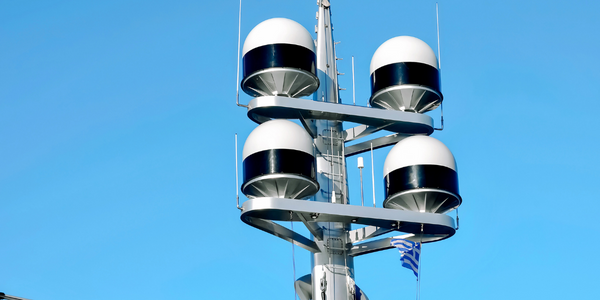公司规模
Mid-size Company
地区
- America
国家
- United States
产品
- Typesafe Platform
- Twitter's Finagle
- Typesafe's Play Framework
- Akka Framework
技术栈
- Scala
- JRuby
- Java
- Sinatra
- Heroku
实施规模
- Enterprise-wide Deployment
影响指标
- Innovation Output
- Productivity Improvements
技术
- 应用基础设施与中间件 - API 集成与管理
- 平台即服务 (PaaS) - 连接平台
- 分析与建模 - 预测分析
适用功能
- 商业运营
- 产品研发
用例
- 数字线程
- 边缘计算与边缘智能
服务
- 软件设计与工程服务
- 系统集成
关于客户
Sharethrough is a technology platform that powers in-feed 'native' ad placements, enabling publishers to manage and sell native ads on web and mobile. The company believes the future of advertising will be about thoughtfully integrating brand content on sites people love to visit, rather than using traditional display advertising formats like cookie-cutter boxes, banners, or auto-playing videos. Founded in the heart of Silicon Valley at Stanford University, Sharethrough has expanded across the United States with offices in San Francisco, New York, and Chicago. The team is composed of professionals with deep experience across the advertising, technology, media, and creative industries. Sharethrough's mission is to replace underperforming traditional display advertising with non-interruptive, seamlessly integrated advertising formats.
挑战
Prior to 2012, Sharethrough's advertising platform relied on an integration between their end-to-end campaign trafficking and analytics platform and a third-party ad server. To realize their vision of powering native advertising across the open web, they needed to build their own ad server as no existing solution supported the targeting, templating, and analytics capabilities they required. Sharethrough started small, focusing on building early pieces of the core templating and targeting technology as a simple, horizontally scalable trafficking tool in Sinatra, deployed on Heroku. As the platform quickly gained traction, they realized that a move from Sinatra (and Heroku) was going to happen sooner than originally planned. Given the significant performance requirements and the critical portion of their infrastructure being in the service layer, Sharethrough decided to examine other languages and frameworks.
解决方案
In 2012, Sharethrough began evaluating languages and architectures for their next-generation service stack. They set objectives around performance, stability, and extensibility, aiming for 99% of transactions to return in under 50ms. Sharethrough needed efficient algorithms that scaled linearly with the content quantity, facilitating low latency and reducing infrastructure costs. They decided to build the next-generation architecture on the JVM, considering JRuby, Scala, and Java. Scala was chosen due to its support for both functional and object-oriented paradigms, expressiveness, and lack of boilerplate code. Sharethrough's architecture focused on extracting small, single-concern services using Twitter's Finagle and Typesafe's Play and Akka Frameworks. The front-end ad server was built using Finagle, while backend services used a combination of Finagle and Play. Akka was used for background processes, such as the automated creative optimizer.
运营影响
数量效益

Case Study missing?
Start adding your own!
Register with your work email and create a new case study profile for your business.
相关案例.

Case Study
VIPER Aid to Acoustic Positioning
Applied Acoustics Easytrak Portable acoustic navigation system can undertake a wide range of tracking and positioning tasks for seabed mapping, towfish tracking and controlling robotic vehicles. It is also used to locate subsea divers, so is critical to the safety of personnel. To deal with difficult operating environment, a robust single board computer is required.

Case Study
A Smarter Brain for Your Train…
Have you ever felt overloaded by too much sensory input? The results can be problematic, even risky if you’re driving at the time. The same holds true for trains, ships, oil rigs, and many other industrial assets. The data processing challenges on these complex machines are growing rapidly as the number of sensors increases; yet so are the opportunities to transform operations by using all the available data effectively. A modern locomotive, for example, has as many as 200 sensors generating more than a billion data points per second.

Case Study
A repeatable model for industrial data intelligence
Exara’s oil and gas client required a reliable way to gather, store, and process data from sophisticated machine assets in remote oil field sites. These harsh, real world environments present significant challenges for high performance computing devices.
-Testbed.png)
Case Study
IIC Industrial Digital Thread (IDT) Testbed
Field engineers and service teams often lack data and digital insights needed to assess, troubleshoot, and determine work scope for the large industrial assets in performing corrective and preventative maintenance activities. QA engineers many times need to understand why a particular problem in the part is happening recurrently or why parts from suppliers don’t stack up well in the assemblies due to mismatch. The root cause is usually hidden in design, manufacturing processes, supply chain logistics or production planning. But without the right data and digital insights, it's hard to pinpoint. GOAL To collect information in the design, manufacturing, service, supply-chain setup and provide access to and intelligent analytics for industrial manufacturing and performance data, to identify the root cause easier. Such insights can improve not only service and owner/operator productivity, but also provide critical feedback to the design engineering and manufacturing operations teams for continuous improvement.

Case Study
IIC - Edge Intelligence Testbed
A test environment is needed for algorithms and architectures that meets a common set of requirements for many testbeds (see "Testbed in Depth")GOAL:A test facility that can be configured into complex edge compute environments, in order to further the state-of-the-art in edge analytics and algorithms

Case Study
The Power of Balancing Technology
Accurate balancing of the turbochargers used in cars and commercial vehicles is vital to ensure engine efficiency and longevity and it is carried out in both the manufacturing and remanufacturing of these units. If not measured and corrected through the balancing process, turbochargers will be noisy and in severe cases bearing failure can occur.







